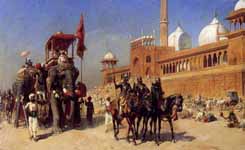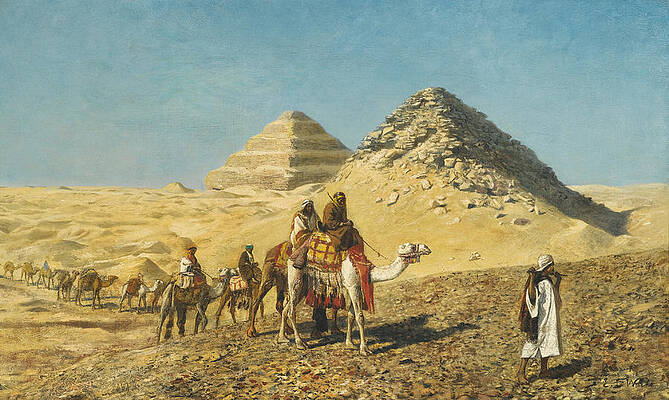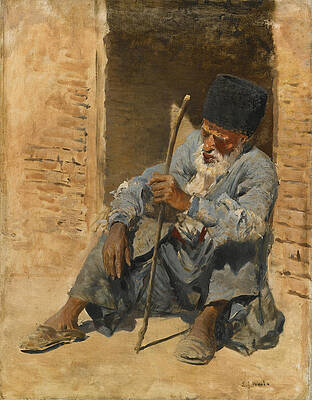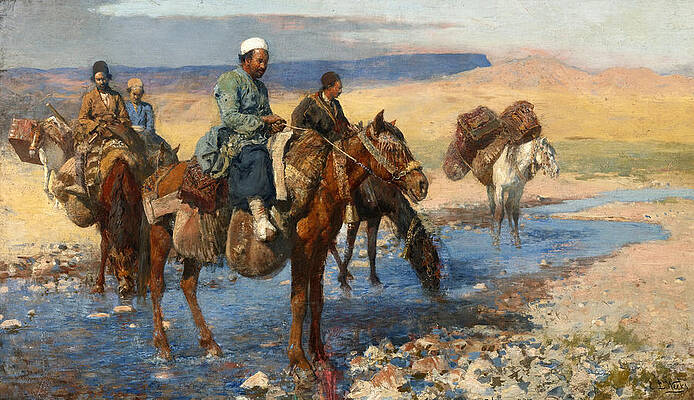Edwin Lord Weeks
Paintings
Camel Caravan Amid the Pyramids. Egypt
Lake at Oodeypore. India
The Old Blue-Tiled Mosque Outside of Delhi India
Indian Prince. Palace of Agra
Nautch Girl resting
Dancing Girl. India
The Nautch
Man Resting in a Doorway. Ispahan Persia
Along the Ghats Mathura
Isfahan Bazaar
Horses at the Ford. Persia
The Elephants of the Rajah Of Jodhpur
The Market in Ahmadabad. India
A Market in Isfahan
The Rajah Starting on a Hunt


An Open-Air Restaurant, Lahore




Two Arabs Reading in a Courtyard


Arrival Of Prince Humbert The Rajah At The Palace Of Amber


Craftsman Selling Cases By A Teak Wood Building Ahmedabad



Feeding The Sacred Pigeons Jaipur


Gate Of The Fortress At Agra India

Mogul And His Court Returning From The Great Mosque At Delhi India

Indian Prince And Parade Ceremony



Leaving For The Hunt At Gwalior

A Court in The Alhambra in the Time of the Moors






Arrival of a Caravan Outside The City of Morocco










Interior of the Mosque at Cordova

Moorish Girl Lying On A Couch--Rabat, Morocco

Royal Elephant at the Gateway to the Jami Masjid, Mathura

Edwin Lord Weeks (1849 – 1903) was an American artist.
Life
Weeks was born in Boston, Massachusetts in 1849. His parents were affluent spice and tea merchants from Newton, a suburb of Boston, and as such they were able to finance their son's youthful interest in painting and travelling. As a young man Weeks visited the Florida Keys to draw, and also travelled to Surinam in South America. His earliest known paintings date from 1867 when he was eighteen years old, although it is not until his Landscape with Blue Heron, dated 1871 and painted in the Everglades, that Weeks started to exhibit a dexterity of technique and eye for composition—presumably having taken professional tuition.
In 1872 Weeks relocated to Paris, becoming a pupil of Léon Bonnat and Jean-Léon Gérôme.[1]
After his studies in Paris, Weeks emerged as one of America's major painters of Orientalist subjects. Throughout his adult life he was an inveterate traveler and journeyed to South America (1869), Egypt and Persia (1870), Morocco (frequently between 1872 and 1878), and India (1882-83).
In 1895 Weeks wrote and illustrated a book of travels, From the Black Sea through Persia and India, and in 1897 he published Episodes of Mountaineering.
Weeks died in Paris in November 1903.[2] He was a member of the Légion d'honneur, France, an officer of the Order of St. Michael, Germany, and a member of the Munich Secession.[3]
Achievements
Weeks exhibited his work in nearly every annual Salon (Paris). He earned a Medal of Honor in 1884, then a Third Class Medal in 1889, followed by a Gold Medal at the 1889 International Exhibition, and finally the Legion of Honor in 1896.
References
Telfair Museum of Art., & McCullough, H. K. (2005). Telfair Museum of Art: Collection highlights. Savannah, Ga: Telfair Museum of Art. p. 102. ISBN 0933075049.
American Art Annual, Volume 5. MacMillan Company. 1905. p. 124.
Chisholm 1911.
Attribution
This article incorporates text from a publication now in the public domain: Chisholm, Hugh, ed. (1911). "Weeks, Edwin Lord". Encyclopædia Britannica (11th ed.). Cambridge University Press.
Sources
Edwin Lord Weeks, "Hindoo and Moslem", Harper's New Monthly Magazine, Vol. 91, No. 545, October 1895, pp. 651–669.
----
Fine Art Prints | Greeting Cards | Phone Cases | Lifestyle | Face Masks | Men's , Women' Apparel | Home Decor | jigsaw puzzles | Notebooks | Tapestries | ...
----
Artist
A - B - C - D - E - F - G - H - I - J - K - L - M -
N - O - P - Q - R - S - T - U - V - W - X - Y - Z
Retrieved from "http://en.wikipedia.org/"
All text is available under the terms of the GNU Free Documentation License


















